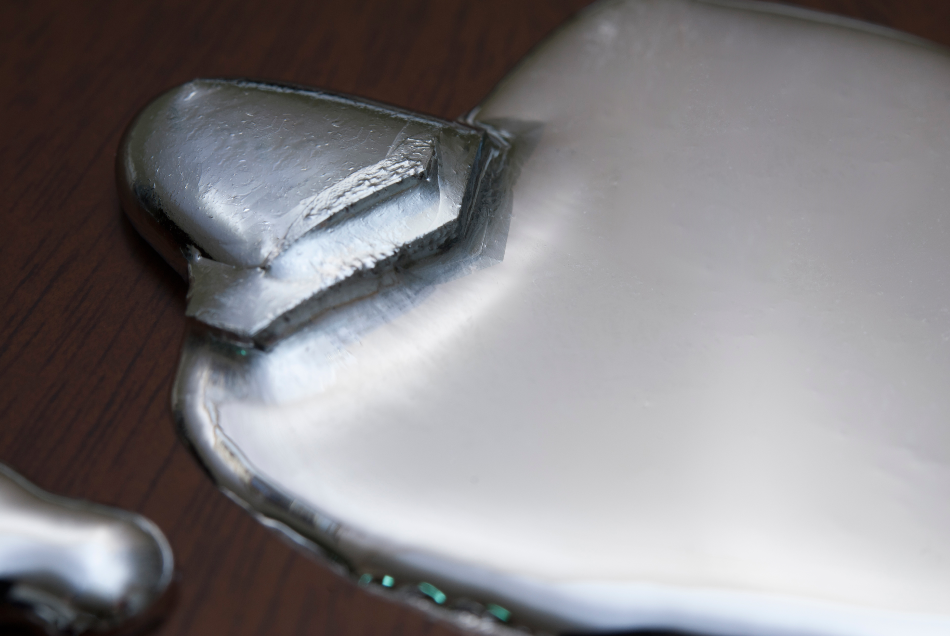Dec 18 2001

Igor Krasilov / Shutterstock
Mendeleev had predicted and described gallium (Ga) as ekaaluminum. In 1875, Lecoq de Boisbaudran identified gallium spectroscopically, and in the same year, extracted the free metal through electrolysis of hydroxide solution in KOH.
Gallium is present as a trace element in germanite, sphalerite, diaspore, coal, and bauxite. Although this metal occurs naturally in approximately the same amount as lead, it is extensively dissipated and not found in concentrated form in any ore. Gallium is mostly recovered from the smelter flue dust of zinc ores and also as a by-product of aluminum production and copper smelting.
Gallium is the only metal that exists in a liquid state at room temperature, just like rubidium, mercury, and cesium. It has one of the longest liquid ranges of any metal, and a low vapor pressure even at very high temperatures. Gallium has a strong propensity to supercool below its freezing point, which makes seeding essential to trigger solidification.
High-purity gallium has an attractive silvery-white appearance (resembling mercury). It displays a conchoidal fracture just like glass. When gallium solidifies, it expands 3.8% and hence it should not be preserved in glass containers. Gallium exhibits superconductivity at –262 °C (–440 °F) when made under certain conditions.
Pure gallium does not dissolve easily in caustic alkali and is resistant to mineral acids. It forms several salts at different valences. In the molten state, gallium attacks other metals.
Applications
Since gallium has a broad liquid temperature range, it is used in high-temperature thermometers. Additionally, it is used as a wetting agent in tin-lead solders, which reduces the solder’s susceptibility to oxidation.
In silicon semiconductors, gallium is utilized as an electron carrier. Gallium arsenide (GaAs) is utilized as a semiconductor and also in rectifiers that work at 316 °C (600 °F). Furthermore, it is used in lenses in CO2 laser systems, and can directly convert electricity into coherent light.
Gallium is used as an alloying agent, to reduce the melting point of alloys.
Magnesium gallate that contains divalent impurities like Mn2+ is used in commercial ultraviolet activated powder phosphors.
Gallium triiodide (GaI3) and gallium selenide (GaSe) are used in electronic applications.